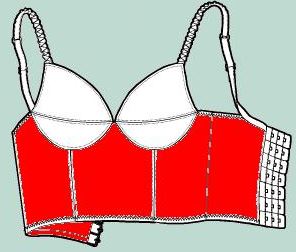
Scaling factor of the shell: resizes the pattern in two directions to account for the elasticity of the selected fabric. Divide the measurement of the unstretched fabric by the measurement of the fabric when it is stretched moderately, as it would stretch on your body. For example, if the fabric stretches from 16" to 20", the scaling factor is 16/20 = .8